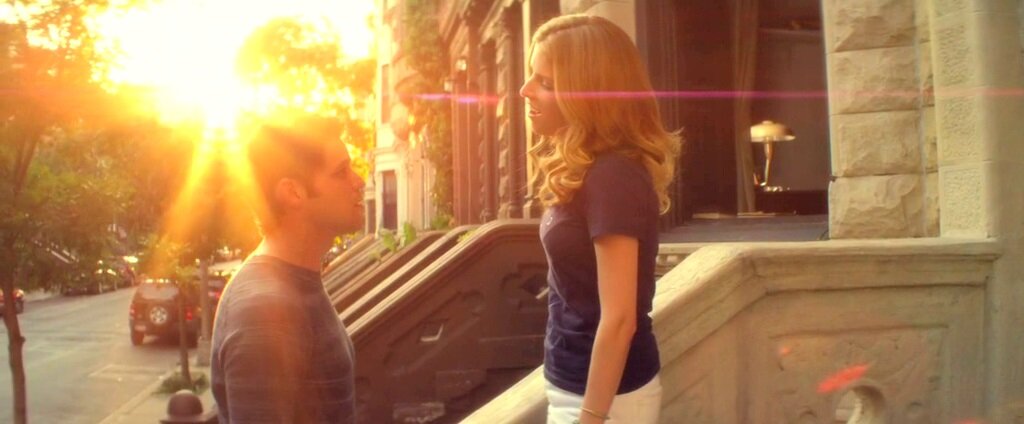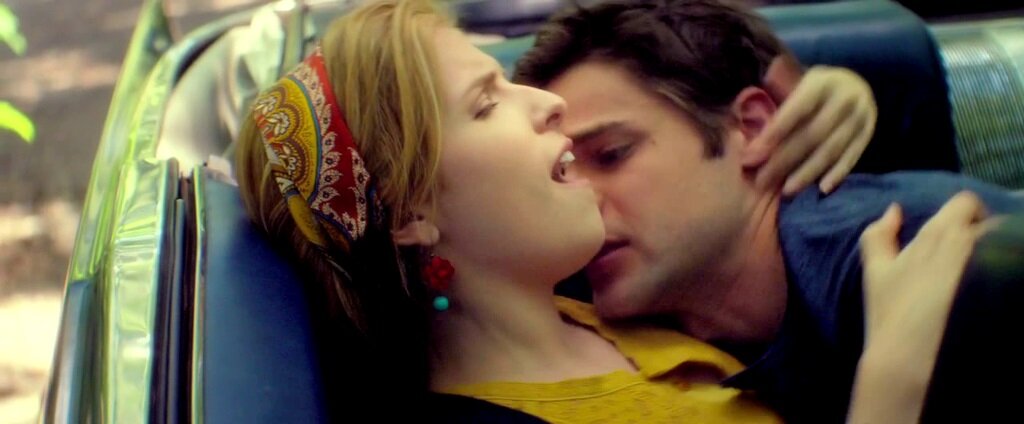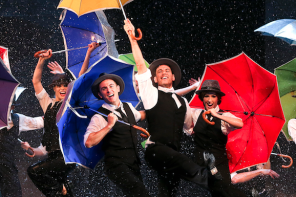At around the halfway mark of Richard LaGravenese’s The Last Five Years, two parallel stories finally intersect. They’re already deeply intertwined, of course, as the film tells the story of a couple (Jamie and Cathy) and the entire course of their 5 year relationship. Aspirational writer Jamie has the benefit of progress – his story moves forward, start to finish, filtered through his own narrow view of events (never is this more apparent than when he dresses Cathy in tinsel, a decoration to his own storytelling). Struggling actor Cathy, however, moves backwards in time. She has the unending benefit of hindsight, painful and ironic, a narrative beginning with loss and ending with futile discovery. Jamie is over and Jamie is done – but the story has only just begun.
The middle section of the film, where two parallel narratives at last glance off each other, undercuts a simple truth about the construction of The Last Five Years: both the film and the musical before it are Cathy’s story. She looms large in its framing at every turn; it begins with her sorrow, it ends with her returning home, and it turns in that central moment on the first cracks in their relationship. The mistakes are Jamie’s but the emotion is Cathy’s. Jeremy Jordan’s Jamie isn’t to blame here – the film makes no attempt at hiding its emphasis on Cathy, a role utterly dominated by Anna Kendrick’s affable fury. The result is the kind of vehicle Kendrick has largely been denied – though her turns in Pitch Perfect and Into The Woods (among others) have given her much-lauded attention as a musical performer, The Last Five Years is a case study in why Anna Kendrick is one of the best actors currently working.
That, however, may come as a somewhat controversially sweeping statement. This is less to do with Kendrick’s performance and more with the kind of vehicle The Last Five Years is. The film is a paradox of slowcore, at once moving across five years at a blistering pace yet takes its time to wander through gentle set-pieces one step at a time. Two of Cathy’s more up-beat songs typify this – A Summer in Ohio is a casual, if fantasy-filled, stroll through a multi-state Skype conversation she has with Jamie, whereas I Can Do Better Than That is set entirely on the front seat of a car ride from the city to Cathy’s parents house. These slow-moving glimpses coupled with focus on only Cathy and Jamie (no other character has a speaking part greater than 4 lines) makes The Last Five Years a slowcore dream that gives Kendrick a thousand opportunities to shine without ever pulling focus and, unfortunately, is also the generally accepted antithesis of what a musical should be.
The unending frenetic energy of Pitch Perfect and Into The Woods are the common template for the movie-musical, in which quick bursts of activity propel the story from song to song without letting too much time linger between them. The Last Five Years follows an entirely unconventional approach to dismantling this need insofar as the film is structurally operatic, sung from start to finish with less than five minutes of un-sung dialogue over its running time. By embracing so totally the music underlying it, the film (and its musical progenitor) hobble the need to dart from song to song with quick bursts of activity. Kendrick and Jordan can then inhabit the space of each song more fully, trading humour and warmth normally reserved for dialogue into welcoming and fully realised musical moments; The Schmuel Song, a number that can stop the stage show dead for the fact that its length far outstrips the need for it, is one of the film’s stand-out non-Kendrick-focussed songs by virtue of the chemistry of the leads making the scene feel as lived-in as any intimate relationship drama (even if the song is itself is still deliberately cringe-level patronising).
Overall, The Last Five Years probably isn’t the musical that musical fans want it to be – it’s slow, measured and revels in quiet moments like those of the slow-building quarter-hour finale. The film itself, though, is a deeply satisfying portrayal of a slow-motion car crash of a relationship, built around a standout use of Anna Kendrick’s often taken for granted talent.
Available now on VOD and in limited release in the US.





![2119371-169_spelunky_vr_xbox_360_070312[1]](/wp-content/uploads/2015/02/2119371-169_spelunky_vr_xbox_360_07031212-330x220.jpg)